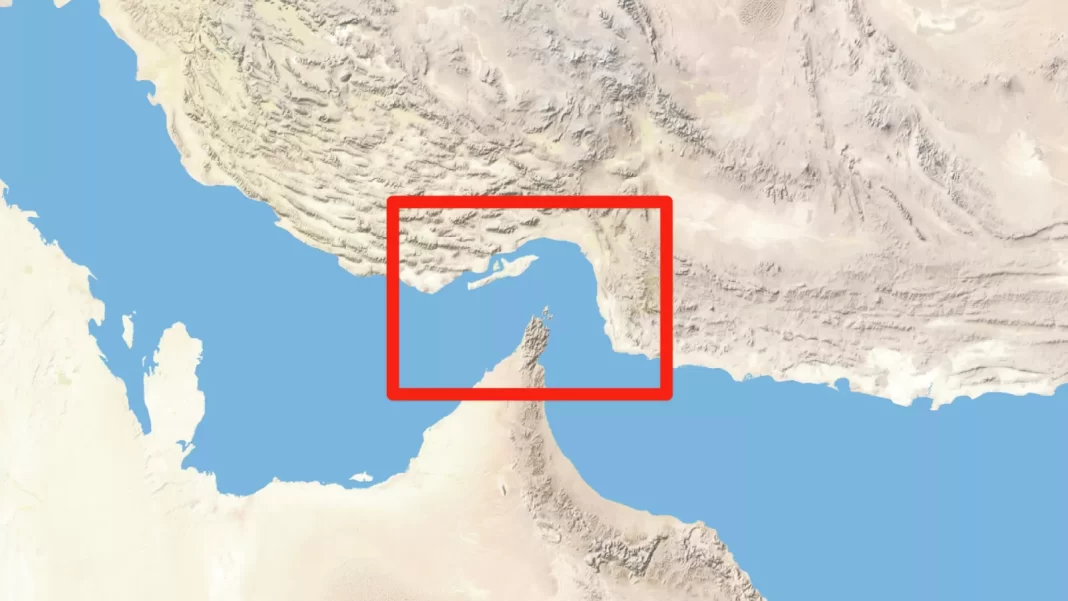Among the world’s major navigation routes, the Strait of Hormuz stands at the forefront. It’s located in the vicinity of Middle Eastern countries and bordered by Iran in the north and the UAE and Oman in the south. It connects the Persian Gulf to the Arabian Sea through a corridor with a width of about 50km at the entrance and exit and 33 km wide at its narrowest point. This passageway is utilized by the world’s major producers of gas and oil in the Middle East and their importers.
According to a survey, in the mid of 2023, almost 20 million barrels of oil were transported every day through the Strait of Hormuz. The US Energy Information Administration says, approximately $600bn of energy is transmitted through this strait. This overriding amount of oil comes from countries such as Iran, Iraq, Kuwait, Qatar, Saudi Arabia and the UAE. This passage is also credited with transferring crude oil from the Persian Gulf to every corner of the world.
The Strait of Hormuz plays a profound role in world trade as one-fifth of daily global production passes through the passage. Its enormous value can be assessed from the fact that the US Energy Information Administration called it “a critical oil chokepoint.” As of 2023, 20% of the world’s liquefied natural gas and 25% of seaborne oil trade pass through the Strait, making it a highly important location for trade.
Iran has sovereignty over the northern side of this trade route declared by UNCLOS (United Nations Convention on the Law of Sea) which sets out framework for sea and ocean by defining the states’ rights and obligations over maritime passage. As it imparts authority to every member nation to exercise control up to 12 nautical miles (13.8 miles) from their coastline. This means that at its narrowest point, the Strait of Hormuz and its shipping lanes would be controlled by Iran and Oman.
During the 12-day conflict between Iran and Israel, the former threatened to block the Strait of Hormuz. So, now there have been widespread speculations about what the consequences will be if Iran blocks the major chokepoint. It is not obvious yet but the experts speculate that if Iran intended to do so then the global economy might have suffered a heavy blow.
From the viewpoint of Rob Thummel, senior portfolio manager at energy investment firm Tortoise Capital, a potential disruption from the Iran-controlled sea route would hit oil prices, and it could go as high as nearly $100 per barrel. The cost would be inflated as compared to the price of oil, which went upward following the Russian attacks on Ukraine.
Global economy would suffer major setbacks if this trading way is closed by the Iran. EIA estimated that in 2018, almost 84 percent of crude oil and 83 percent of liquefied natural gas that passed through this sea passage were exported to Asian markets. EIA declared that China is the biggest buyer of Iranian oil. Being the vital importer of Iranian oil, it sourced 5.4 million barrels per day through the Strait of Hormuz in the first quarter of this year, in comparison, the US and Europe imported just 400,000 and 500,000 barrels per day, respectively, in the same period, according to the EIA.
Apart from China, , India and South Korea also imported 2.1 million and 1.7 million barrels per day respectively, almost 60% of their crude oil through the strait and Japan imported nearly three-quarters in the first quarter of year 2025, according to the EIA’s indications.
Vandana Hari, the founder and CEO of Vanda insights while highlighting the dependency of China on Iranian oil said “Iran cannot afford to turn its oil-producing neighbors, who have been neutral or even sympathetic towards the Islamic Republic as it faced Israeli and US attacks, into enemies, any more than trigger the ire of its main crude market, China.”
This strait plays a crucial role in the economy of the USA too, as it can produce 13 million barrels of oil per day, but it does not have any option to export this oil to the rest of the world other than through the Strait of Hormuz.
It would be “uncharted terrain”, uttered by Bader Al-Saif, Assistant Professor at Kuwait University, whose field of interest is geopolitics of the Arabian Peninsula. “It would have direct consequences on world markets, because you’re going to look at an uptick in the oil price, you’re going to see the stock markets reacting very nervously to what’s happening,” Mr Al-Saif told the BBC.
Former head of the UK’s intelligence agency MI6, Sir Alex Younger, forecasted the future repercussions of blocking the strait. “Closing the Strait would be an incredible economic problem given the effect it would have on the oil price,” he said.
The closure of the passage would produce long-lasting impacts on the Gulf countries too, whose economies rely heavily on energy exports, as that’s not just a domestic problem, either: rising manufacturing costs could eventually be passed on to consumers, fueling inflation around the world.
But for now, the dust of war has settled between Iran and Israel. Tehran has chosen to adopt silence regarding the blockage of Strait of Hormuz, so the future is unclear that whether Iran will choose confrontation or not as major part of its economy relies heavily on this passage too.
BY: Writer Aleeza Fatima is an analyst
Disclaimer: Views expressed by writers in this section are their own and do not necessarily reflect The Times Union‘ point of view







